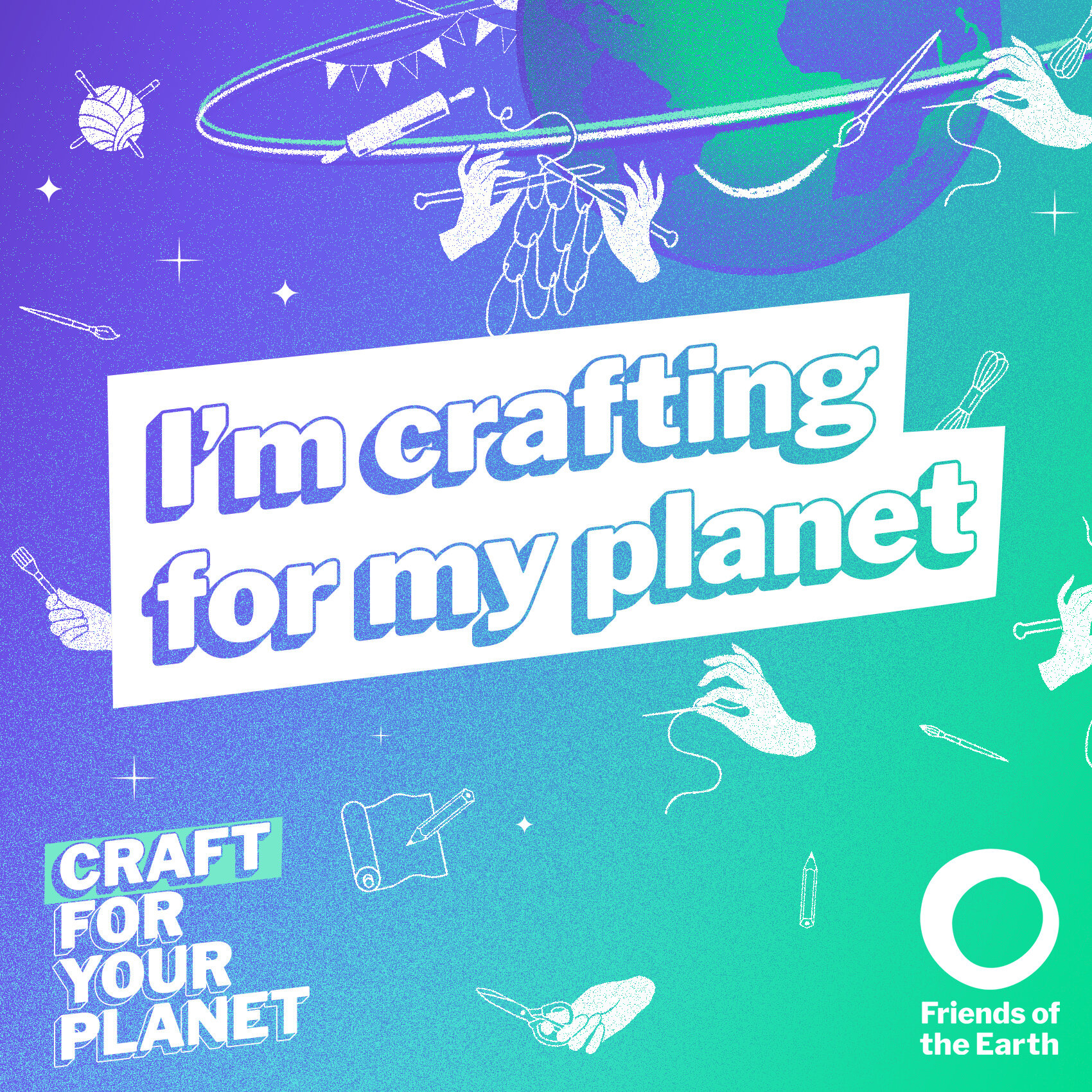Craft for your planet campaign by Friends of the Earth
Today I saw a Facebook post from Friends of the Earth about their new fundraising campaign which asks people to ‘Craft for your planet’. Scrolling through the comments there was much negativity to this campaign, even a feeling it is ill-judged - and the reason for this negativity? How can using precious resources to make more ‘stuff’ help the planet?
Crafting and making, by its very nature, is alchemy, it transforms one thing into another. Craft transforms mud, minerals and rocks into ceramics, glass or jewellery. Craft uses resources such as water, chemicals and energy to enable this process. Craft creates more things in the world.
The responsibility to take better care of our environment is shared by the craft sector. It is possible to craft considerately, to create without squandering resources to do so, and more and more craftspeople are deliberately considering the impact of their making on the environment.
Some are taking big steps. Last month jeweller Emma Aitchison ended use of gold plate, her decision took into account the chemicals used, the impact of extracting gold for plating and the process of plating itself, as well as the difficulty in recycling gold plated jewellery (you can read about it here). Crafts Magazine recently looked at the environmental impact of ceramics (Crafts issue 284: The Change Makers September/October 2020), and at makers working to clean up ceramics. Artist Alice Fox harnesses natural processes and works with found, gathered and grown materials, and Jane Bevan uses natural and found materials, which she collects on her daily walks in the ancient woodland near her home in Derbyshire, Jane gathers and uses materials such as thorns, bark, seeds, feathers and acorn cups.
Such big steps can be too big for many makers, but there are small steps we can all take. We asked some of the craftspeople we work with about their actions towards a better, more considered craft practice, and there was a huge range of deliberate actions taking place; from using green energy to heat studios and fire kilns to recycling materials to the point of zero waste. Of course there is more that can be done, but the first step has to be even thinking through the materials and resources used in a craft practice.
So what can we do as an organisation? At New Brewery Arts we too use green electricity throughout our buildings and studios, our accommodation was built with low energy use at its core. We can also consider the materials used in our classes and work to find out the impact of their production (extraction, manufacturing etc.) and disposal. We can ask makers about their choices and promote the positive actions many are taking to reduce their environmental impact.
We play a part as consumers too and we need to better consumers. We can ask the craftspeople and the shops that sell their work how materials are sourced. We can buy differently; for example commissioning a piece means it is made without generating waste in the form of ‘speculative’ products that may not sell. And we should all keep in mind Vivienne Westwood’s words (I have quoted them here before) when we are deciding what to buy, and “buy less, choose well, make it last.”
By choosing craft that considers its impact we ‘Craft for our planet’.


